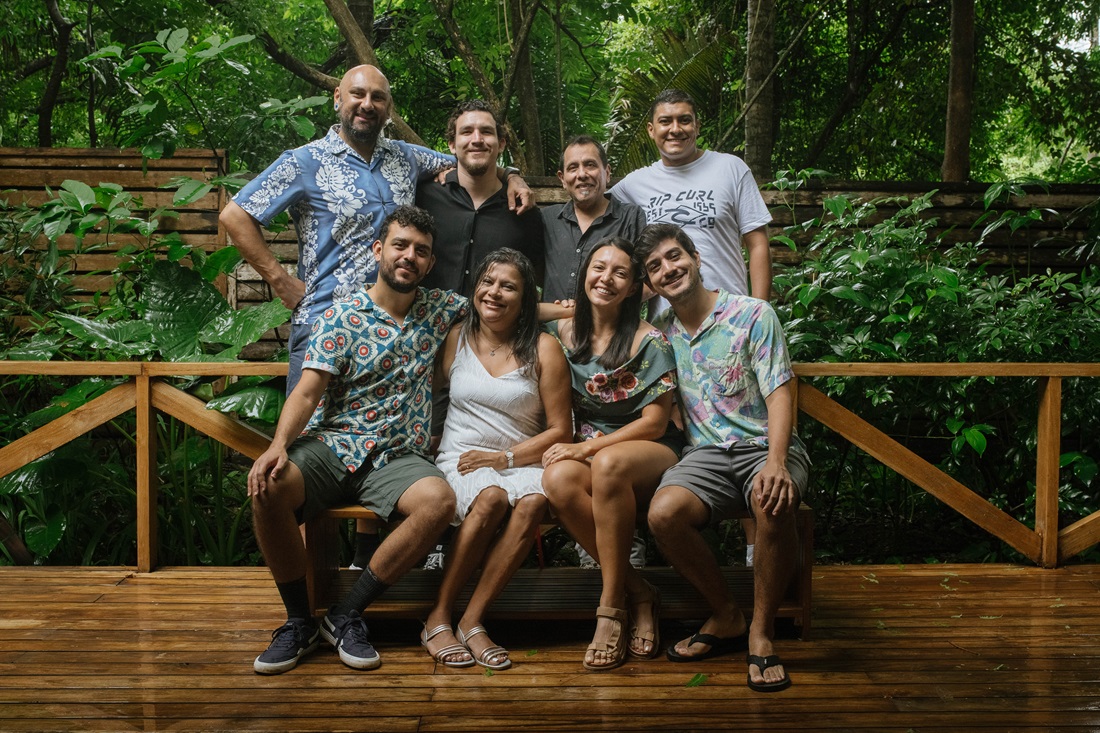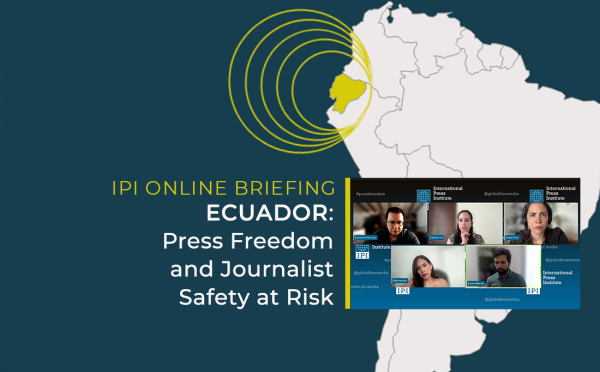Stay up to date with IPI’s work on media innovation and sustainability by subscribing to our newsletter The Outlook. Sign up here.
The Costa Rican media market is dynamic, with more journalists starting their own ventures, providing a template for what a new version of a strong media ecosystem, focused on local needs, can look like.
These media entrepreneurs aim to serve their communities in a country where anti-media rhetoric from President Rodrigo Chaves Robles and reduced income from government funding have caused financial and existential concerns for traditional media.
Four in five people in Costa Rica agree that their country needs more regional and local media. According to Lidieth Garro, a lead researcher for GeoMedios, which maps Costa Rican media, this need is tied to strong local identity.
“The large media organizations’ agenda are very oriented towards the central valley’s agenda, there is no way to address the information needs of communities outside the central valley,” Garro says.
In the past two decades Costa Rica has promoted a policy of decentralization. The country’s 84 cantons each have their own elected government, but this local civic participation is not complemented by sufficient spaces for local communication. In 2019, 30% of the country’s cantons did not have any local media, according to GeoMedios.
Yanancy Noguera, president of the Association of Journalists and Professionals in Communication Sciences, says that while communities are crying out for local media, publishers must transcend service journalism or the replication of national news. Those services can also be provided by local branches of government officials and local organizations, or by other media.
To consolidate a loyal audience and become sustainable, Noguera notes, local media need a unique value proposition.
San Carlos Digital: ‘Putting a face to the news’
When media entrepreneur Marcela Delgado returned to her hometown San Carlos to launch a local news organization, she knew she needed to communicate its value to audiences.
“San Carlos Digital was conceived to cover a niche that was empty at that time [2016]: in-depth reporting, and above all, positive content from the northern area,” explains founder Delgado.
Their editorial agenda leaves aside breaking news and sensationalism. When there is an accident in their region, instead of publishing images of the actual accident, they inform their audience if the road is closed or not. Delgado summarizes their editorial agenda as “purposeful content that informs, that educates, that builds capacity.”
She also adds that the reason why her media micro business — it employs one more person in addition to Delgado — is still running seven years after its founding is because they paid closer attention to website metrics than social media interactions.
Delgado prioritized encouraging readers to build a habit of visiting the website for news. This included starting every single post on social media with a small call-to-action like “more information” or “read the whole story” and the link to the publication. Today, 40% of their traffic is direct, making the outlet less reliable on changing algorithms or the need to use paid promotion.
“The premise is that at least one [story per day] becomes what we ourselves call a ‘tractor-story’ that pulls the others and sustains visits throughout the day,” Delgado explains.
Delgado explains that in most cases ‘tractor-stories’ are those which reflect San Carlos’s traditions, personalities, and culture; the kind of stories that only people from San Carlos can relate to and that no other media in the country would cover. For example, during Breast Cancer Awareness Month, the lead story was of a well-known member of the community who is also a cancer survivor.
“It has more to do with deepening the news, or putting a face to the news,” Delgado summarizes.
Another important factor in building a faithful audience is her focus on editorial standards and fact-checking.
“In seven years, we have not had to publish a right of reply statement, a clarification, or anything. Our thinking is, ‘We don’t have to arrive first: we have to know how to get there’,” explains Delgado. “We focus more on the quality of the information, rather than throwing something out there as soon as possible. That ensures our credibility.”
📌 Conozca su historia: https://t.co/9agwNRjZ2s – Joyce Montes Ramírez rompió esquemas y con 18 años es ejemplo de vida. Esta sancarleña representará al país en Juegos Deportivos Centroamericanos. pic.twitter.com/TGKJ6r69Rb
— SanCarlosDigital.com (@sancarlosdg) September 14, 2023
A story about an athlete with Down Syndrome from the region, who represented the country in athletics.
The Voice of Guanacaste: Listening to readers’ requests
In Guanacaste, the northern Pacific province of Costa Rica, another media organization has created strong roots in its region: The Voice of Guanacaste.
Ernesto Rivera, executive director of the publication since June 2023, explains that this regional media of eight employees differentiates itself through its focus on the needs of the local audience, including specific audience segments such as rural workers or young people.
According to The Voice website, of their 110 stories published in 2022, 38% were about communities and service. The team pays attention to the events that directly affect community members, such as the overflow of a river, a forest fire, or an entrepreneurs’ fair, covering them in-depth – and crucially, Rivera says, “listening to what [readers] tell us when they write to us.”
From community-building to sustainability
Operating as a non-profit, The Voice of Guanacaste is sustained by external grants and funding; one example is funding received in May 2023 to support its GuanaData project, which analyzes how public funds are used by local governments.
They also earn revenue from advertising and paid content, clearly marked as such on the website, and focusing on clients that have a relevant connection to the region. Their website also advertises memberships that range from $3-15 per month.
Membership does not give access to any additional content, but members get discounts at stores working with The Voice of Guanacaste and can participate in two editorial meetings each year – an additional chance to have a say in the topics that get attention. For all these revenue streams, the hyperlocal approach and relevance to the community is an important factor behind their success.
The Dance of the Yegüita (the little mare) is one of Nicoya’s most beloved traditions. What you might not know is that there are also Yegüitas in Nicaragua and El Salvador. What do these traditions have in common and how are they different? https://t.co/Jpbkc3YAO2
— La Voz de Guanacaste (@VozdeGuanacaste) December 15, 2023
San Carlos Digital uses a different funding model: the steady traffic to the website and strong local following ensures that the outlet qualifies for advertising from government institutions. According to Delgado, this keeps the organization financially viable.
Both Rivera and Delgado say that their direct connection with their communities has allowed them to survive in a very competitive media environment. They use limited resources to focus closely on the content their communities value, content they have asked for and which other media are not providing.
“We know that we depend on the audience,” says Delgado. “Obviously, the day we don’t have an audience, the project dies.”
IPI’s media innovation and sustainability work is made possible with support from the European Union, Friedrich Naumann Foundation and ERSTE Foundation.



